A lighthouse is a tall tower that is built on the coasts and islands, and with the help of its bright light and steering wheel, it is a guide for ships and planes at night and in adverse weather conditions.
Lighthouses are not only a symbol of maritime history and culture, but they play an important and effective role in navigating and guiding sea and air navigators. By emitting light from the light system installed at the highest point of the tower, they warn or promise to reach land. Today, the significant advances in navigation science have reduced the instrumental value of these towers, and lasers, electronic navigation systems, satellite navigators, etc. have taken their place; But their importance as a light in the darkness will always remain.
Get to know lighthouses:
What is a lighthouse?
Lighthouses are beacons and elevated structures erected along coastlines and dangerous areas of oceans and bays to guide sailors, yachtsmen and large barges to anchor or prevent collisions with rocks close to shore. These tall structures are usually cylindrical in shape and are made of very strong spotlights and special colors and patterns so that they can be identified and distinguished from other buildings from a long distance. Another name for a lighthouse is a lighthouse; But it is often known by the same term “lighthouse”.
Some lighthouses are painted in the form of black, white and red horizontal stripes, and a circle or a rhombus is drawn on the body of some so that they can be seen in the darkness of the night and in the light of day, and the watchers of the ship can easily recognize the location of the searchlight and its distance from their vessel. Also, the body and entrance of the lighthouses are designed in such a way that the sea water does not penetrate into them during the tide and does not cause their erosion.
Photo source: Wikimedia; Photographer: Gordon Leggett
How does a lighthouse work?
Although some lighthouses also have a warning sound that is used in certain conditions and situations, their main mechanism is with the help of reflected light that sends a visible warning to ships of the presence of land hidden under the ocean, rocks, rocks, coral reefs, etc. .. which cannot be seen in the state of tide, be informed.
The height of the lighthouses is determined according to the climatic conditions, geographical location and characteristics of the construction site; But in general, the architects and engineers of these structures use the science of trigonometry to determine the height. They measure the height of the lighthouse in feet and by converting the unit, they get its exact distance in relation to the horizon and then calculate it in nautical miles.
At the highest point of the sea towers, there is a special room surrounded by glass windows and in the middle of it, a very strong mechanized light is installed. These structures are also equipped with a fuel room, a coastal signaling room, a location for lifeboats, a repair house, an equipment warehouse, and a special room for the guard’s residence.
 USA” loading=”lazy”/>
USA” loading=”lazy”/>
Portland Lighthouse; Photo source: Wikimedia; Photographer: Rapidfire
Marine floodlights work on the principle of vertical light reflection on a horizontal surface. On this surface of the horizon, giant lenses called “Fresnel Lens” are attached and reflect a very strong light beam even in foggy and stormy weather conditions. If the sea towers are built on the coast, the lenses have the ability to change the position of 180 degrees; But if these buildings are built on a rock in the middle of the sea, the lenses are constantly rotating 360 degrees clockwise.
In the old days, lenses had to be adjusted every two hours to rotate clockwise. Also, liquid mercury was used to prevent friction in their base; But today, the lanterns start working at sunset and turn off automatically at dawn.
History of the lighthouse
The first lighthouses were created by lighting large fires on mountains along the coast. After that, stone towers were built on the hills and beaches to light the fire at a higher height and provide better visibility to the sailors. Some time later, these stone towers were equipped with large bells and bells that rang with the current of the wind and informed the navigators that they had reached land.
Before the invention of the light bulb, the light source of the lighthouse at night was wood or coal. Then it was time for the lamps. Until the 19th century, lamps were lit with fuels such as rapeseed oil, whale oil, pig fat, sea jaw fat, and kerosene; But from the 19th to the 20th century, acetylene gas replaced them, and finally, the spread of electricity and electric lamps changed the intensity and duration of lighthouse lighting.

Photo source: Unsplash Photographer: Robert Wiedemann
From the past until now, lighthouses have been designed in such a way that they survive against the saltiness of sea water, tides, giant waves, sea storms, strong winds, etc., from the risk of erosion, rotting and breaking; But with the passage of years, the design of these sea towers evolved and in the late 18th century with the increase in trade and commerce in the oceans, structures and maritime equipment progressed and steel and concrete replaced stone, thus huge and powerful lighthouses were built in different parts of the world. estimate Today, with the development of technology in the shipping and navigation industry, the number of lighthouses in the world has decreased to less than 1,500, and in most countries, they are open to the public as cultural heritage and tourism.
Guarding the lighthouse
Lighthouse keepers play an important role in the safety of mariners. They are responsible for maintaining and monitoring the operation of the lanterns, repairing them, checking the light source, taking care of the equipment, ensuring the safety of the ships, etc. They should also regularly provide coastal authorities, fleets and marines with a full working report of the operation of the searchlight, the weather conditions on the beach and the possibility or not of the possibility of berthing or passage of vessels.
Since living in a lighthouse comes with unique challenges, in the past lighthouse keepers lived alone in these harsh and remote weather conditions; But today, with the advancement of technology, many lighthouses built in difficult and unsuitable areas are guided automatically and by remote control.
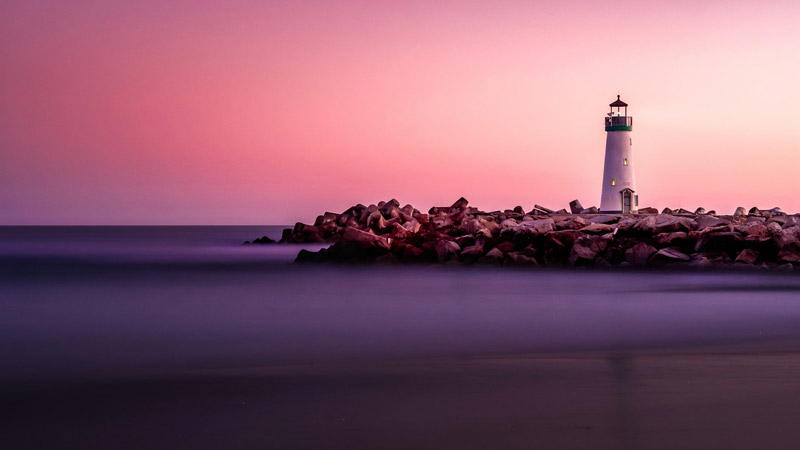
Santa Cruz Lighthouse; Photo source: Unsplash Photographer: Everaldo Coelho
In the early 19th century in America, the job of lighthouse keeper was considered under the category of government and navy jobs, and women could also be employed in it. They had to endure isolation and loneliness along with living in the wild nature of islands in the middle of the ocean, uninhabited environments, rocky and impassable beaches, severe storms, torrential rains, floods and attacks by violent sea waves, earthquakes, tsunamis, etc.
In most cases, it was difficult for the lighthouse keepers to obtain food, drinking water, medicine and basic necessities, and they had to depend on local resources or regularly resupply their food supply by boat or helicopter.
The most famous lighthouses in the world
Hercules Lighthouse
“Hercules Lighthouse” is one of the oldest lighthouses in the world, which was built in the first century AD in the port of La Coruna, Spain. This structure is a monument of ancient Roman architects, at a height of 57 meters, and is still used as a guide for navigators today.
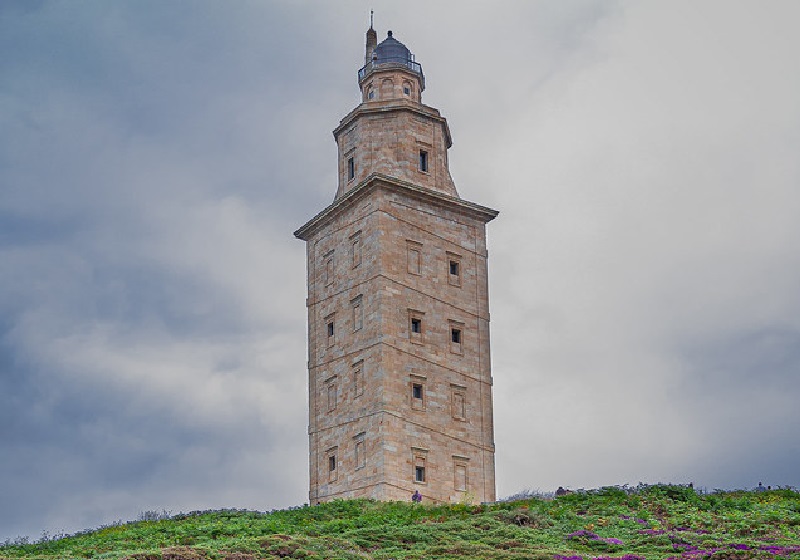
Hercules Lighthouse; Photo source: Flickr Photographer: Ignacio Ferre
Chania Lighthouse
Chania Lighthouse is located in the historic port of Crete in Greece and is one of the oldest lighthouses in the Mediterranean Sea. This lantern was first built by the Venetians at the end of the 16th century, and years later, it was repaired and restored by the Egyptians, Ottomans, and Greeks. The fame of this structure is due to its unique design and its resemblance to mosque minarets.
Crescent Lighthouse
Currently, America has the largest number of lighthouses in the world, and the “Crescent Lighthouse” in California is the most expensive lighthouse in the world. Although this short structure does not have much resemblance to sea towers and minarets, it took 10 years to build and cost $715,000. The building is now listed on the US National Register of Historic Places.

Crescent Lighthouse; Photo Source: Flickr Photographer: Davegriffiths
Cape Horn Lighthouse
“Cape Horn Lighthouse” is built in the south of Chile and the meeting point of the Atlantic and Pacific oceans and is known as one of the most dangerous lighthouses in the world. The geographical location, severe storms, hidden ice in the cold seasons, big waves, etc. have made this region one of the most challenging places in the world for seafaring. In addition to the promise of reaching the land, this lighthouse also warns the sailors about the collision of the ships with the rocks under the sea. Many ships have sunk in Cape Horn and many sailors have lost their lives.
Jeddah Lighthouse
“Jeddah Lighthouse” was built in 1990 in the city of Jeddah in Saudi Arabia, and with a height of 133 meters, it has earned the title of the tallest lighthouse in the world. This tower, which is known as “Jeddah Light”, is used with functions such as an observation tower, a monitoring and control tower, and a lighthouse.
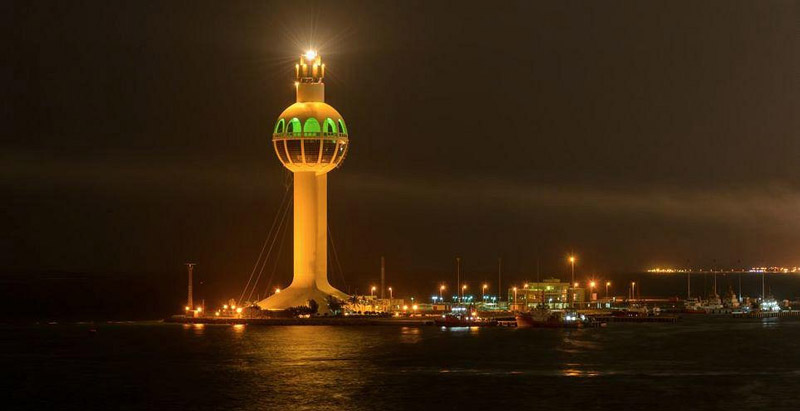
Jeddah lighthouse in Aristan; Photo source: tripadvisor Photographer: Mohammad Atef
Lighthouse of Alexandria
One of the seven wonders of the world is the “Lighthouse of Alexandria” in Egypt, which was built in the beginning of the third decade BC, during the reign of Ptolemy II, and its construction lasted until 297 BC. According to the Greeks, the height of this structure was 272 meters, and the Arabs, who saw the ruins of the tower 10 centuries later, said its height was 16 meters.
Thanks to the magnificence of this sea tower, until the 12th century, the port of Alexandria on the coast of the Nile River was one of the most prosperous ports in the world and through it all kinds of grains, vegetables, spices, metals, drinks and many valuable goods of the world were traded. The decline of this structure in 1375 was due to a severe earthquake in the city of Alexandria, and this event destroyed it so much that the architects of that time were not able to rebuild and restore its ruins.

Lighthouse of Alexandria; Photo source: Wikimedia; Designer: Johann Bernhard Fischer von Erlach
The lighting of this lighthouse was provided by burning tree gum and various oils, and it is said that this valuable work was the first high lighting structure in the world. At the top of this tower was a concave mirror to reflect the light, which they said in describing its size:
This light was so strong that a person could see its trail to the end of the world!
In addition to attracting and guiding commercial ships, this mirror has also been used to repel sea attacks. Its military function was such that the guards, when the aggressors and pirates attacked, focused the sunlight on the enemy ships and caused the vessels to burn.
Torlitis Lighthouse
“Tourlitis Lighthouse” belongs to Greece and was built in 1990 on a stone pillar in the Aegean Sea. The height of this structure reaches seven meters; But because it is built on a rock in the heart of the ocean, it is 36 meters above sea level. This lighthouse is famous for its incredible beauty. Torlitis is also noted as the first modern lighthouse that works automatically and incorporates modern technology into classical architecture.
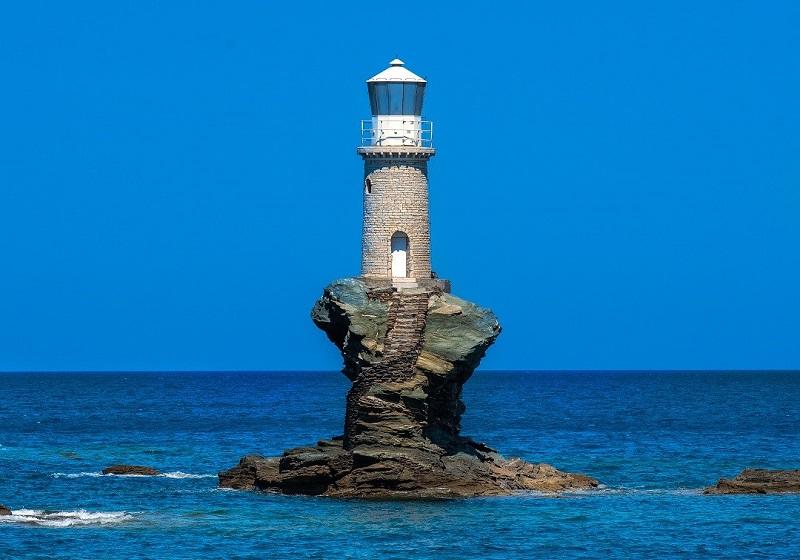
Torlitis Lighthouse; Photo source: hotel-chryssiakti.gr; Photographer: Unknown
Sumiyoshi Lighthouse
“Sumiyoshi Lighthouse” in Ogaki, Japan, is one of the oldest lighthouses in this country, which was built at the end of the Kamakura period (1185 to 1333 AD) in ancient Japan. This spotlight is the first and one of the most famous wooden lanterns in the world. In 1950, the original lighthouse was destroyed by Typhoon Jane; But again its building was built with stone so that it can be more resistant to natural and unnatural accidents and threats.

Sumiyoshi Lighthouse; Photo source: Wikimedia; Photographer: Monami
Michigan Lighthouse
“Michigan Lighthouse” (Michigan Lighthouse) in America is also world famous as one of the most eye-catching lighthouses. Although the building of this tower does not have a unique design, the lanterns that hide the lantern in their hearts, strong winds and stormy rains, temperatures lower than minus 20 degrees, floating ice around the lantern, etc. have given it a unique beauty and the opinion of photographers and tourists has attracted

Michigan Lighthouse; Photo source: Wikimedia; Photographer: Nanamac47
Three stone lighthouse
Thridrangaviti Lighthouse, which was built in 1939 on a stone pillar in Vestmannaeyjar, in the south of Iceland, is known as the most isolated lighthouse in the world. The reason for the fame of this lighthouse is its location on a high and steep rock in the middle of the ocean, which makes accessing it with many challenges.

three stone lighthouse; Photo source: icelandmonitor.mbl.is; Photographer: Unknown
Lighthouses in Iran
In Iran, there are several lighthouses on different islands, beaches and ports, including Abu Musi Island, Bandar Abbas, Bandar Gaz, Bandar Anzali, Chabahar Coastal City, Jask Port, Hemang Island, Hondurabi Island, Kish Island, Lawan Island, Sahel Nowshahr, Qeshm Island, Hormoz Island, Bushehr City, Big Tanb Island, Small Tanb Island, etc. have been built.
- Murano Lighthouse: This lighthouse is located on Lark Island. Its white building is divided into eleven equal parts with red lines and is still a guide for sailors today. The lighthouse of Murano is 32 meters and has 13 floors.
- Hor Hut Lighthouse: This lighthouse, which is a statue named “Guardian of the Sea”, is known as the symbol of Kish Island in the Persian Gulf. The height of this structure is 16 meters and the light installed in it illuminates the sea up to 400 meters long.
- Anzali clock tower: This lighthouse was built in the early Qajar period in the Anzali port of Gilan province with the purpose of a watch tower against the northern neighbors. The height of this structure reaches 28 meters.
- Bushehr Lighthouse: A 47-meter-high lighthouse is under construction on Bushehr beach. The architecture of this structure is such that in addition to the function of navigation, it also hosts tourists. A budget of 900 billion rials has been allocated for the construction of this lantern, and restaurants, viewpoints, promenades, etc. are to be built on the five floors of this building.
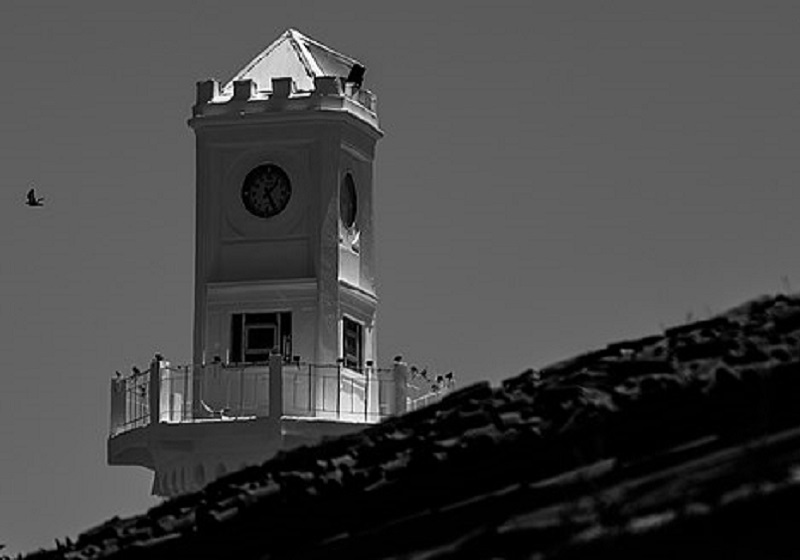
Anzali clock tower; Photo source: Wikimedia; Photographer: Herbert Karim MashiSiggiworld
Do you have the experience of visiting the lighthouses of Iran and other parts of the world? Share this experience with us and other Kajaro users.
Cover photo: Walton Lighthouse in America; Photo source: unsplash; Photographer: Alfred Leung
Frequently asked questions
What is a lighthouse?
Lighthouses are tall structures built on the coasts and islands of the oceans to guide mariners in approaching or preventing them from hitting underwater rocks and reefs.
What are the lighthouses in Iran?
Iran’s lighthouses in various islands, beaches and ports, including Abu Musi Island, Bandar Abbas, Bandar Gaz, Bandar Anzali, Chabahar Coastal City, Jask Port, Hengama Island, Hondurabi Island, Kish Island, Lawan Island, Nowshahr Beach, Qeshm Island, Hormuz Island, Bushehr City, Big Tonb Island, Small Tonb Island, etc. were built.
RCO NEWS













